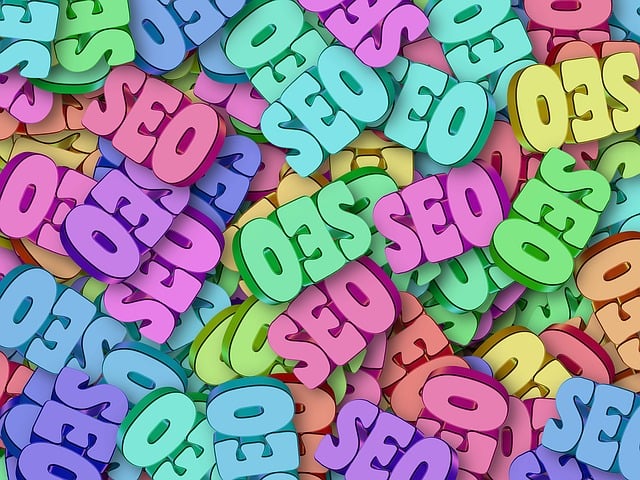On-Page Optimization Training is a crucial strategy for boosting website visibility and search engine rankings through effective keyword integration. This involves optimizing web pages by strategically placing relevant keywords in content, meta tags, headings, and alt text to match user search queries. By understanding target audience intent, creating high-quality content, and leveraging tools like Google Keyword Planner, trainees can enhance organic traffic and establish a strong online presence. Key components include title tags, meta descriptions, header tags, image optimization, natural language integration, and measuring performance using analytics tools. Ultimately, this training equips professionals to analyze data, make informed decisions, and adapt strategies for better search rankings and enhanced user experience in the competitive digital landscape.
On-Page Keyword Integration is a cornerstone of successful search engine optimization (SEO). This comprehensive guide, designed for both beginners and seasoned professionals, explores every facet of on-page optimization. From understanding the foundational principles to key placement techniques, this article covers essential strategies for maximizing search rankings. Learn about keyword research methods, effective title tag and meta description optimization, structured content, image alt text integration, natural language usage, and measuring performance with valuable insights from industry experts. Upgrade your SEO skills with our On-Page Optimization Training today.
Understanding On-Page Keyword Integration: A Foundation for SEO Success

On-Page Keyword Integration is a fundamental strategy in search engine optimization (SEO) that involves strategically placing relevant keywords throughout a webpage to enhance its visibility and ranking on search engines. It’s an art and science of optimizing content, meta tags, headings, and other elements to match user search queries accurately. A well-executed on-page SEO strategy ensures your website provides a clear understanding of its content to both users and search engine algorithms.
This process requires a deep understanding of target audiences and their information needs. Through On-Page Optimization Training, professionals learn to conduct thorough keyword research to identify the terms users are searching for. This involves analyzing search volume, competition, and user intent to select keywords that accurately represent the page’s content. By seamlessly integrating these keywords, from titles and headings to body text and image alt tags, websites can increase their relevance and authority in search results.
The Role of On-Page Optimization in Search Engine Rankings

On-Page Optimization plays a pivotal role in enhancing search engine rankings. It involves strategic practices to optimize individual web pages, ensuring they align with both user intent and search engine algorithms. By integrating relevant keywords naturally throughout content, optimizing meta tags, and structuring data effectively, on-page optimization boosts the visibility of webpages, making them more likely to appear in top search results. This process is crucial for driving organic traffic and establishing a strong online presence.
On-Page Optimization Training equips individuals with the skills to navigate this landscape effectively. It delves into the intricacies of keyword research, highlighting the importance of understanding user queries and selecting the most relevant terms. Trained professionals learn to create compelling content that not only engages readers but also signals search engines about the page’s topic. Through hands-on exercises and real-world case studies, this training ensures practitioners can apply best practices to improve search engine rankings and deliver exceptional user experiences.
Key Elements for Effective On-Page Keyword Placement

Effective on-page keyword integration hinges on a strategic approach that involves several key elements. Firstly, understanding your target audience and their search intent is paramount. This means incorporating keywords naturally within content, ensuring they align with what users are actively searching for. Headings, meta tags, and alt text are prime locations for strategic keyword placement—these areas not only impact SEO but also enhance user experience.
Additionally, on-page optimization training emphasizes the importance of content quality and relevance. Keywords should be distributed across the page in a way that feels organic, avoiding overstuffing or excessive use, which can negatively impact readability and search engine perception. Internal linking and URL structure also play a role, as they help distribute link equity and make your site’s architecture more accessible to both users and search engines.
Strategies for Conducting Comprehensive Keyword Research

Comprehensive keyword research is a cornerstone of successful on-page optimization, making it an essential part of any On-Page Optimization Training curriculum. The first step involves identifying relevant keywords that accurately represent your content’s focus. Tools like Google Keyword Planner or SEMrush can help uncover search volume, competition, and related keywords, providing valuable insights for informed decision-making.
Once you’ve shortlisted potential keywords, analyze user intent behind each search query. Understand whether the user is looking for information, products, or services, and tailor your content to match this intent. This strategic approach ensures that your on-page elements—from titles and headings to meta descriptions and body copy—align perfectly with what your target audience is seeking, enhancing both user experience and search engine rankings.
Optimizing Title Tags and Meta Descriptions for Maximum Impact

When it comes to on-page keyword integration, the title tag and meta description are two of the most crucial elements. These elements play a significant role in search engine optimization (SEO) as they appear prominently in search results, influencing user click-through rates and overall website visibility.
Optimizing these components involves carefully integrating target keywords while ensuring readability and relevance. In on-Page Optimization Training, you’ll learn to craft compelling title tags that accurately reflect the content while incorporating relevant keywords. Similarly, meta descriptions should provide a concise summary of the page’s content, enticing users to click while naturally including important keywords. Effective use of these elements can significantly boost your search rankings and drive more organic traffic to your website.
Utilizing Header Tags and Content Structure for Better Indexing

Utilizing Header Tags and Well-Structured Content is a crucial aspect of on-page keyword integration, enhancing search engine optimization (SEO) efforts. These header tags, denoted by
to
, serve as a roadmap for both users and search engines, indicating the hierarchy and importance of topics within your content. For instance, the `
` tag should encompass the main topic or keyword, providing a clear signal to search algorithms about the central theme. This strategic placement helps search engines index your page accurately, ensuring relevant keywords are considered in context.
` tag should encompass the main topic or keyword, providing a clear signal to search algorithms about the central theme. This strategic placement helps search engines index your page accurately, ensuring relevant keywords are considered in context.
Furthermore, structuring your content logically with headings and subheadings makes it more scannable. Users often skim through pages, relying on these headers to quickly grasp key sections. When combined with relevant keyword usage throughout the text, search engines can better understand the context and intent behind each part of the content, leading to improved indexing and higher rankings in search results. Effective on-page optimization, including header tag utilization, is a vital component of any comprehensive On-Page Optimization Training program.
Incorporating Keywords into Images and Alt Text

Incorporating keywords into images and alt text is a powerful strategy within on-page optimization training. Images can significantly enhance user experience, but they also present an opportunity for search engines to understand your content better. By seamlessly integrating relevant keywords into image file names, titles, and descriptions, you ensure that search engine crawlers recognize the context and relevance of your visual elements. This practice aligns with best practices in on-page optimization, where every element on a webpage is strategically optimized for both users and search algorithms.
When writing alt text, or alternative text, for images, it’s crucial to provide concise yet descriptive information that includes targeted keywords. Alt text serves as a text substitute for images, especially for users with visual impairments or when images fail to load. Search engines rely on this text to index your content, making it visible in search results. By integrating keywords naturally, you not only improve accessibility but also boost your page’s visibility and relevance for specific searches, thereby enhancing overall on-page optimization.
The Art of Natural Language Integration for User Engagement

In the realm of on-page optimization, mastering natural language integration is an art that enhances user engagement and search engine visibility. This strategy involves seamlessly weaving keywords into content in a way that feels organic and intuitive to readers. It’s not about stuffing keywords or forcing them into sentences; instead, it’s about understanding how users interact with text and tailoring the content to meet their information needs. Effective on-page optimization training teaches professionals to identify relevant keywords and incorporate them naturally through well-crafted copy, headings, meta descriptions, and image alt tags.
By integrating keywords in these essential elements, websites become more than just collections of data; they transform into dynamic resources that cater to user queries. This approach not only improves search engine rankings but also encourages visitors to spend more time on the page, scrolling, clicking, and interacting with the content. Ultimately, this enhances overall website performance and contributes to a better user experience, which is a key factor in the ever-evolving digital landscape.
Measuring and Analyzing On-Page SEO Performance

Measuring and analyzing on-page SEO performance is a crucial step in understanding the effectiveness of your content strategy. By utilizing tools like Google Analytics and Search Console, marketers can track key metrics such as click-through rates (CTRs), average position, and organic traffic volume. These insights help identify high-performing pages that are ranking well and attracting visitors, while also revealing areas for improvement. On-page optimization training equips content creators with the skills to analyze these metrics and make data-driven decisions.
Through on-page SEO training, professionals learn to audit content for relevant keywords, optimize meta tags, and ensure a user-friendly experience. This involves understanding search engine algorithms, staying updated on industry trends, and adapting strategies accordingly. By measuring and refining on-page elements, marketers can enhance the overall quality of their digital assets, leading to better search rankings and improved user engagement.
